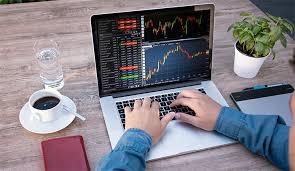
The Ultimate Guide to Forex Trading Online
Forex trading online has revolutionized the way individuals approach investing. Now, anyone with an internet connection can participate in the foreign exchange market, which is one of the largest and most liquid markets in the world. For those interested, forex trading online exbroker-turkiye.com offers a wealth of resources to help beginners navigate this complex yet rewarding environment.
What is Forex Trading?
Forex trading, or foreign exchange trading, involves buying and selling currency pairs in an effort to make a profit. Traders speculate on the price movements of currencies, aiming to profit from fluctuations in exchange rates. The forex market operates 24 hours a day, five days a week, making it accessible at any time for traders around the globe.
How Does Forex Trading Work?
In forex trading, currencies are traded in pairs, such as the EUR/USD or GBP/JPY. The first currency in the pair is the base currency, while the second is the quote currency. The trader’s goal is to determine whether the base currency will strengthen or weaken against the quote currency. If a trader believes the euro will appreciate against the dollar, they would buy the EUR/USD pair.
Traders can either go long (buy) or short (sell) on currency pairs, depending on their market analysis. They use various tools and strategies to make informed decisions, including technical analysis, fundamental analysis, and news trading.
Getting Started with Forex Trading
To begin your journey in forex trading online, you need to understand the following key concepts:
- Trading Platforms: Most traders use online platforms like MetaTrader 4 (MT4) or MetaTrader 5 (MT5) to execute trades. These platforms provide charts, indicators, and various tools necessary for effective trading.
- Demo Accounts: Before investing real money, it is advisable to practice on a demo account. This allows you to familiarize yourself with trading platforms and develop your trading strategies without financial risk.
- Regulations: It’s crucial to choose a regulated broker to ensure the security of your funds. Research the reputation of brokers and check whether they are governed by financial authorities.

Types of Forex Orders
Understanding how to place different types of orders can significantly impact your trading success. Here are some common order types:
- Market Orders: Buy or sell a currency pair at the current market price.
- Limit Orders: Set a specific price at which you want to buy or sell a currency pair. This order will only execute when the market reaches your set price.
- Stop Orders: Used to limit losses or protect profits by closing a position at a specific price.
Risk Management in Forex Trading
Forex trading carries a high level of risk, and managing that risk is essential for long-term success. Here are some fundamental risk management strategies:
- Position Sizing: Determine how much of your trading capital you are willing to risk on a single trade. Many traders use a rule of thumb where they risk no more than 1-2% of their capital on any trade.
- Stop Loss Orders: Always set a stop-loss order to limit potential losses on each trade.
- Diversification: Avoid putting all your capital into one currency pair. Diversifying your trades can reduce risk.
Trading Strategies for Forex Market
Several strategies can be employed in the forex market, catering to different trading styles:
- Scalping: A short-term strategy aiming to profit from small price changes. It involves making numerous trades throughout the day.
- Day Trading: Opening and closing positions within the same trading day to capitalize on intraday price movements.
- Swing Trading: This strategy involves holding positions for several days or weeks, taking advantage of price swings.
- Position Trading: A long-term strategy where traders hold onto positions for an extended period, driven by fundamental analysis.
Technical Analysis in Forex
Technical analysis involves studying price charts and using indicators to forecast future price movements. Some popular tools include:

- Moving Averages: Help identify trends by smoothing out price data.
- Relative Strength Index (RSI): A momentum oscillator that measures the speed and change of price movements.
- Fibonacci Retracement: A tool used to identify potential reversal levels based on the Fibonacci sequence.
Fundamental Analysis in Forex
Fundamental analysis evaluates economic, financial, and geopolitical factors that influence currency values. Key elements to consider include:
- Economic Indicators: Reports such as GDP, employment rates, and inflation impact currency movements.
- Central Bank Policies: Interest rate changes and monetary policy decisions can greatly influence currency strength.
- Geopolitical Events: Political stability and economic performance of a country play a significant role in currency valuation.
Choosing the Right Broker
Selecting a reliable forex broker is crucial for a trader’s success. Consider the following factors when choosing a broker:
- Regulation: Choose brokers regulated by reputable financial authorities to ensure your funds are protected.
- Trading Costs: Look for competitive spreads and commissions, as high costs can eat into your profits.
- Customer Support: Good customer service is essential, especially for new traders seeking assistance.
Conclusion
Forex trading online offers numerous opportunities for keen investors willing to learn and adapt. By understanding key concepts, practicing effective risk management, and continuously honing your strategies, you can enhance your trading success. Remember that success in forex trading requires patience and discipline, as well as a commitment to ongoing education and adaptation to market conditions.
For further information on forex trading, resources, and professional guidance, don’t hesitate to explore more specialized platforms and forums.


